By Bill Goslin, Davis Vision, Ballston Lake, New York
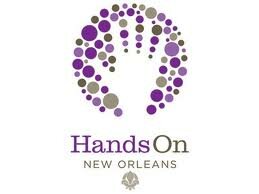 I heard about HandsOn New Orleans from Joan and Harry Thornhill, members of our church, who volunteered in Biloxi in February 2006. Joan and Harry sent daily emails back to us describing their work and experiences. Knowing that I was a “jack of all trades” they thought I should go down and help out.
I heard about HandsOn New Orleans from Joan and Harry Thornhill, members of our church, who volunteered in Biloxi in February 2006. Joan and Harry sent daily emails back to us describing their work and experiences. Knowing that I was a “jack of all trades” they thought I should go down and help out.
I took two weeks vacation from my job and found myself in New Orleans at the end of April. The city I found was truly devastated with blue tarps on roofs, abandoned buildings, piles of debris, hundreds of abandoned cars, flooded homes for miles and whole neighborhoods destroyed. There was much work to be done.
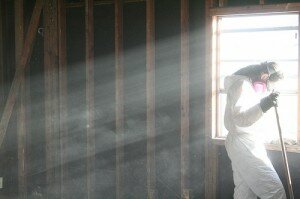
Photo by Ethan Bagley
Although I traveled to New Orleans by myself, I quickly made friends with the staff and other volunteers. Meeting so many folks, from all over the world, who were also there to help was very gratifying to me personally. The volunteer headquarters was simple yet functional with an air conditioned bunk room, great dinners from the church kitchen, hot showers and wireless Internet access to communicate with the folks at home.
I went on my first “house gutting” job in a middle class neighborhood of ranch homes. I was given a sledgehammer and crow bar then began to work on pulling moldy sheetrock and insulation down from ceilings. This was hard hot dirty work but when we were done the inside of the house was transformed; it reminded me of a new house under construction – bare studs waiting for new sheetrock.
I have spent many years as a volunteer fireman and asked if anyone had heard of “pike pole” a tool used by the fireman to pull down sheetrock. This tool has a long pole and would make the “gutting” work a lot easier and much quicker. No one had heard of the tool so after leaving New Orleans I found the tools and got them to New Orleans. Akron Brass Company, of Arkron Ohio, donated the first poles with just a phone call.
 I had the opportunity to work on restoring a Jazz Venue in New Orleans called the “mother in law lounge” named after the hit single written by Ernie Ka-Doe in 1961. Ernie past away a few years ago and his wife, Antoinette Ka-Doe, had been running the lounge until Katrina when she was pulled from the roof of the lounge by a helicopter. We arrived one morning with a truck load of building materials and began work.
I had the opportunity to work on restoring a Jazz Venue in New Orleans called the “mother in law lounge” named after the hit single written by Ernie Ka-Doe in 1961. Ernie past away a few years ago and his wife, Antoinette Ka-Doe, had been running the lounge until Katrina when she was pulled from the roof of the lounge by a helicopter. We arrived one morning with a truck load of building materials and began work.
It was a pleasure to get to know Antoinette and the many members of the “New Orleans Jazz family” who stopped by to thank us for our efforts. I might mention that Miss Antoinette is a great cook and while volunteering we ate authentic new Orleans treats like poboy sandwiches, red beans and rice, jambalaya and crawfish. I look forward to someday visiting the lounge, sipping a beer and listing to some New Orleans Jazz.
I enjoyed the hard work, the fellow volunteers and the HandsOn New Orleans folks who make it all happen. I urge anyone with some spare time to volunteer with HandsOn New Orleans. The experience is life changing; helping others who are in need is very rewarding.
As Arnold would say;
“I’ll be back!”
Bill Goslin lives in Ballston Lake New York, a suburb of Albany, with his wife and two sons; Jacob (9 years old) and Simon (7 years old). He works for a company called Davis Vision where he manages their telecommunications systems.

 by Chris de Veer, former Volunteer & Director of Hands On Gulf Coast (2006 – 2008)
by Chris de Veer, former Volunteer & Director of Hands On Gulf Coast (2006 – 2008)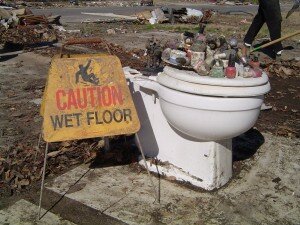 The first neighborhood I visited was East Biloxi, home to many Vietnamese and African Americans.
The first neighborhood I visited was East Biloxi, home to many Vietnamese and African Americans.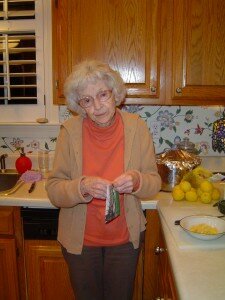 Two years before Katrina, I visited my Grandma, pulled out her photo albums, scanned in every photo, made a database, and asked her to identify everyone in every photo, estimate when the photo was taken, and describe what was going on.
Two years before Katrina, I visited my Grandma, pulled out her photo albums, scanned in every photo, made a database, and asked her to identify everyone in every photo, estimate when the photo was taken, and describe what was going on. ench of rot was overpowering.
ench of rot was overpowering.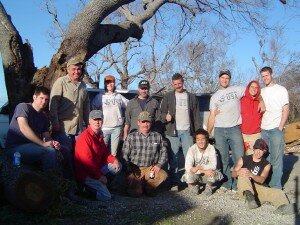 I know my grandmother was lucky compared to many other victims of Katrina.
I know my grandmother was lucky compared to many other victims of Katrina.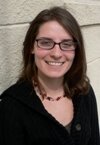
 I don’t think either of us truly knew what we were in for…and I think back and cannot believe that there were people from our national office that believed we had the capacity and ability to accomplish what we accomplished.
I don’t think either of us truly knew what we were in for…and I think back and cannot believe that there were people from our national office that believed we had the capacity and ability to accomplish what we accomplished.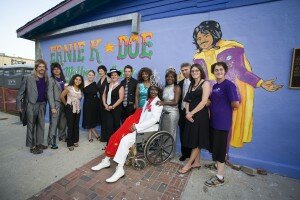 So many people have come from around the world and either come back multiple times or have decided to make New Orleans their home.
So many people have come from around the world and either come back multiple times or have decided to make New Orleans their home.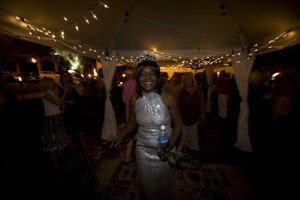
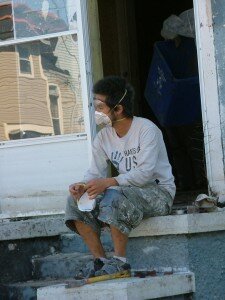 Volunteering with
Volunteering with  “Gutting is fun!” Actually, we all know that it is a heartbreaking job, tempered only by the cathartic relief of exhausting physical labor, and the knowledge that we are actually helping someone clear a space for their future, and dreams for a new beginning.
“Gutting is fun!” Actually, we all know that it is a heartbreaking job, tempered only by the cathartic relief of exhausting physical labor, and the knowledge that we are actually helping someone clear a space for their future, and dreams for a new beginning.
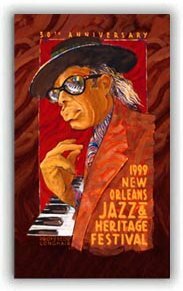
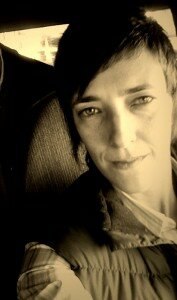 by Erika Putinsky
by Erika Putinsky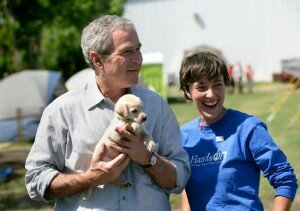 During my efforts with HandsOn Network on the Gulf Coast after Hurricane Katrina, I had the opportunity to live and work in a place where our nation truly came together as a unified community.
During my efforts with HandsOn Network on the Gulf Coast after Hurricane Katrina, I had the opportunity to live and work in a place where our nation truly came together as a unified community.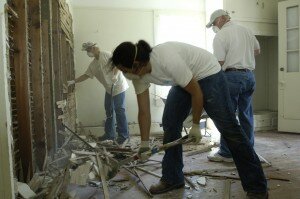 Once the images of the despair and the stories of the survivors reached our world, people began to act.
Once the images of the despair and the stories of the survivors reached our world, people began to act.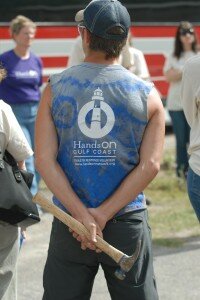 After the hurricane so many people remembered the power in showing up, being willing to help with a hammer to rebuild a home, or offer a hug to rebuild a life.
After the hurricane so many people remembered the power in showing up, being willing to help with a hammer to rebuild a home, or offer a hug to rebuild a life.
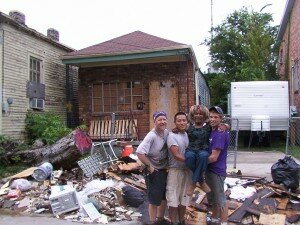 In the ensuing months, HandsOn Network also launched HandsOn Gulf Coast and
In the ensuing months, HandsOn Network also launched HandsOn Gulf Coast and 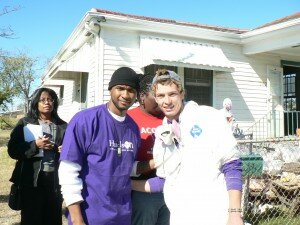 Currently, 13 HandsOn Action Centers serve the oil spill-impacted states of Alabama, Mississippi, Florida and Louisiana. Looking ahead, HandsOn Network will partner with these local affiliates to recruit and train 10,000 volunteer leaders and mobilize 50,000 volunteers to devote an expected 1 million hours to support the region’s environmental and economic recovery. In addition, HandsOn will conduct a series of on-the-ground and virtual “boot camps” to train volunteer leaders to manage others and develop projects to meet community-specific needs, such as creating job re-training and job search clinics; restoring parks and open spaces; and assisting small businesses in operations, marketing and finance to recoup losses or improve business sustainability. To sign up and Get HandsOn for the boot camps, please visit www.handsonnetwork.org/nola2011.
Currently, 13 HandsOn Action Centers serve the oil spill-impacted states of Alabama, Mississippi, Florida and Louisiana. Looking ahead, HandsOn Network will partner with these local affiliates to recruit and train 10,000 volunteer leaders and mobilize 50,000 volunteers to devote an expected 1 million hours to support the region’s environmental and economic recovery. In addition, HandsOn will conduct a series of on-the-ground and virtual “boot camps” to train volunteer leaders to manage others and develop projects to meet community-specific needs, such as creating job re-training and job search clinics; restoring parks and open spaces; and assisting small businesses in operations, marketing and finance to recoup losses or improve business sustainability. To sign up and Get HandsOn for the boot camps, please visit www.handsonnetwork.org/nola2011.

